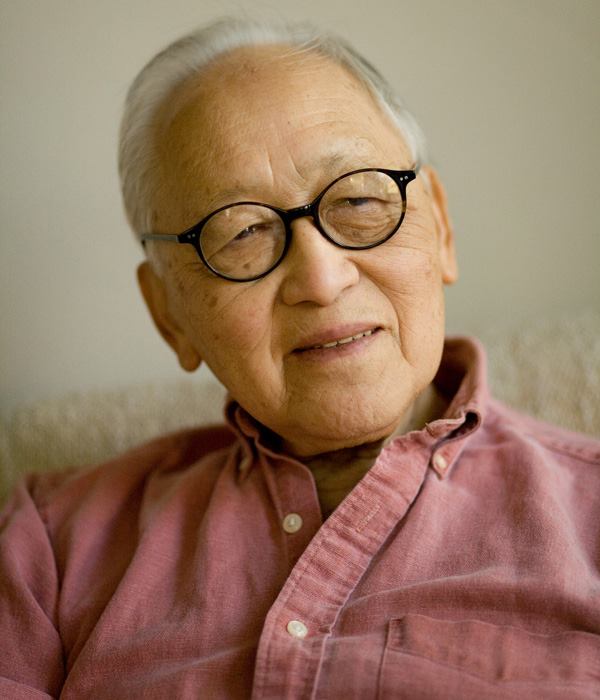A true pioneer of architectural lighting, both in terms of project and luminaire design, William Lam, 87, died on April 6 at his home in Cambridge, Mass. His lighting accomplishments are numerous, including an Institute Honor for Collaborative Achievement from the American Institute of Architects in 2000. And yet, many architects and lighting practitioners do not realize the debt they owe to Lam. The causes he championed include lighting at the start of the design process, and the integration of lighting, daylighting, and building systems long before such an approach was the norm.
Lam was born in Honolulu in 1924 and moved to Cambridge, Mass., in 1941 to attend the Massachusetts Institute of Technology (MIT). His studies were interrupted by World War II, during which he served in the Army Air Corps as a B-25 co-pilot. After the war, he returned to MIT and received a bachelor’s degree in architecture in 1949. Lam was influenced by the work of Finnish architect Alvar Aalto—who had designed MIT’s Baker House in 1946 and taught at MIT while Lam was a student.
His first foray into design was the creation of a gooseneck floor lamp with a clip-on diffuser shade. Friends asked where they could get one, so Lam set up his own studio—Lam Workshop, which became Lam Inc. in 1951. The company manufactured architectural lighting fixtures, and still does today as a division of Philips Lighting.
In 1959, Lam focused his energies on projects and established William Lam Associates to serve as a lighting consultant to architects. Some of the notable projects he worked on include the Washington, D.C., Metro and the San Diego Convention Center. He advocated for what became his slogan, “lighting by design, not engineering,” and was instrumental in drafting standards and guidelines such as “An Approach to the Design of the Luminous Environment” in 1976 for the State University Construction Fund of New York. In 1980, his firm became Lam Partners as his associates assumed greater day-to-day responsibilities. Although he retired to more of a project-consulting role in 1995, Lam remained engaged with lighting issues up until his death.
His books Perception and Lighting as Formgivers for Architecture (1977) and Sunlighting as Formgiver for Architecture (1986) have become seminal reference books for both architects and lighting designers. Although out of print, Lam provided access to the texts when he created a website (wmclam.com) in 2008. A Living Legend member of AL’s 2001 Hall of Fame, he noted in the article in the March 2001 issue, “I think that I’ve helped to lay the foundation for my profession, and that’s a good feeling.”
A true pioneer of architectural lighting, both in terms of project and luminaire design, William Lam, 87, died on April 6 at his home in Cambridge, Mass. His lighting accomplishments are numerous, including an Institute Honor for Collaborative Achievement from the American Institute of Architects in 2000. And yet, many architects and lighting practitioners do not realize the debt they owe to Lam. The causes he championed include lighting at the start of the design process, and the integration of lighting, daylighting, and building systems long before such an approach was the norm.
Lam was born in Honolulu in 1924 and moved to Cambridge, Mass., in 1941 to attend the Massachusetts Institute of Technology (MIT). His studies were interrupted by World War II, during which he served in the Army Air Corps as a B-25 co-pilot. After the war, he returned to MIT and received a bachelor’s degree in architecture in 1949. Lam was influenced by the work of Finnish architect Alvar Aalto—who had designed MIT’s Baker House in 1946 and taught at MIT while Lam was a student.
His first foray into design was the creation of a gooseneck floor lamp with a clip-on diffuser shade. Friends asked where they could get one, so Lam set up his own studio—Lam Workshop, which became Lam Inc. in 1951. The company manufactured architectural lighting fixtures, and still does today as a division of Philips Lighting.
In 1959, Lam focused his energies on projects and established William Lam Associates to serve as a lighting consultant to architects. Some of the notable projects he worked on include the Washington, D.C., Metro and the San Diego Convention Center. He advocated for what became his slogan, “lighting by design, not engineering,” and was instrumental in drafting standards and guidelines such as “An Approach to the Design of the Luminous Environment” in 1976 for the State University Construction Fund of New York. In 1980, his firm became Lam Partners as his associates assumed greater day-to-day responsibilities. Although he retired to more of a project-consulting role in 1995, Lam remained engaged with lighting issues up until his death.
His books Perception and Lighting as Formgivers for Architecture (1977) and Sunlighting as Formgiver for Architecture (1986) have become seminal reference books for both architects and lighting designers. Although out of print, Lam provided access to the texts when he created a website (wmclam.com) in 2008. A Living Legend member of AL’s 2001 Hall of Fame, he noted in the article in the March 2001 issue, “I think that I’ve helped to lay the foundation for my profession, and that’s a good feeling.”
